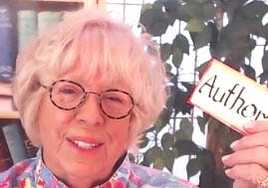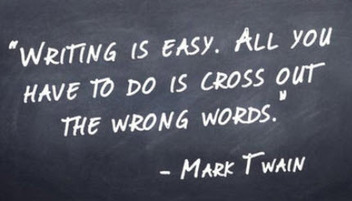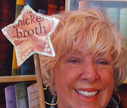 Fiction writers, so focused on creation of dynamic manuscripts with fascinating characters, sparkling dialogue, and plots that twist and turn, often fail to pay close attention to basic writing mechanics. As a result, their work can be filled with excessive adjectives, adverbs, and "red-flag" words . . . not quite ready for prime time and destined to head for delete-ville. Prevent this from happening by practicing the following exercise to discover writing mechanic issues in your work that need to be revised prior to submission. If you meet with a critique/writing group, enlist your pals to help you discover the major "red-flag" words that can identify you as a writing rookie. (What? You aren't part of a critique group? Why the heck not?) Here's how it works: Ask your writing pals to bring their first three manuscript pages (double-spaced), along with yellow, pink, and blue highlighter pens to your next meeting. Then, swap manuscripts. Why? Because it's difficult to be objective looking at words you've written/re-written over and over and over and . . . . Begin with an adjective search. Yellow-highlight them. Then, adverbs. Hint: most adverbs end with "ly." Pink-highlight them. And finally, look for and blue-highlight "was" and the word that follows it. This enjoyable exercise helps everyone "up the ante," and elevate their writing skills without stress. I'm a big proponent of incorporating fun and learning, especially when it comes to group exercises. All writers (myself included) tend to become overly self-critical and uptight as we revise, tighten, and polish our work. Laughter helps us lighten up during the rite-of-passage from rookie to pro . . . from writer to author. Bring revised pages to your next meeting. Repeat the "coloring" exercise and compare versions. Your revised pages will be less rainbow-kissed than the originals. Celebrate your progress with ice cream, pizza, or brownies, or all three! Just to be completely clear: "Color Me Grammatically Correct" is a group exercise, not a suggestion for you to print out your manuscript and highlight away. That would be crazy making! Instead, use the technique (described below) to help mature your work and maintain your sanity at the same time. BTW: My 7-page tutorial identifies the 35 worst "red-flag" words and weak verbs that may infect your query, synopsis, and manuscript. It includes a unique Search-Mark-Revise process to make locating and removing these rascals stress-free as possible. 7 page tutorial for $7 bucks. Such a deal! Available at MolliMart.  Is your manuscript really truly ready for Prime Time? Or, does it need some revision to polish it (so it glows in the dark) before you launch your agent submission process? FACT: Most writers equate manuscript revision with "life is hard, then you die." That's understandable. The task of editing a 70/85,000 word manuscript can seem impossible to achieve. Sadly, quite a few writers decide, "I can't do this," and give up writing forever. The following THREE STEPS will help you move through the editing/revision process of your manuscript with as little stress as possible. STEP ONE: Acknowledge and celebrate! If you're at the revision crossroad, before you decide to take up face painting, dentistry, or sky diving, remind yourself that you've accomplished something millions of people talk about, but never, ever achieve. You've written a book, (short story or article) and have completed a first draft. Good for you! At some point, your manuscript was only a concept. You brought it to life as you sat in front of a blank screen, and transformed your thoughts into words, sentences, paragraphs, and chapters until you reached the end. STEP TWO: Make friends with revision. Next on your "to-do" list is revision. Yes revision. Now, don't go for avoidance and decide, instead, to schedule a root canal. Make friends with the word. Revision. It's part of the get-published process. Nobody, and I mean absolutely nobody, writes a first draft that is clean, polished, and ready to go. No writer has ever been published without having to revise their manuscript, often more than once. STEP THREE: Take it little bit by little bit. Heed advice from my grandmother. When faced with an activity that reeked of tedium, she took it on, inch-by-inch, which made every task a cinch. It didn't matter if she was remodeling the family ice cream parlor, attacking weeds in her rutabaga and kale garden, or pickling cucumbers. She'd start at the beginning and take it a little bit at a time. Inch by inch. Revision is a "take it a little bit at a time" process. Begin by searching out the low-hanging fruit: obvious "red-flag" words and weak verbs that diminish your writing and announce (to agents or acquisition editors) that you are a "rookie." Yikes. You don't want this to happen. When you embark on the quest to locate red-flag words and revise sentences where they appear, your work automatically matures. You mature from "rookie" to "pro" to "published." As you advance your way through revision, your awareness of red-flags expands. You become so sick and tired of revising them that you scrub them right out of your consciousness and won't use them on your next project or ever. Is that good news or what? STEP THREE.1 Set a goal. How to get started? Set a revision goal, five-or-ten pages, perhaps a chapter a day? Whatever works for you. When you complete your daily quota, treat yourself to a latte or a walk in the park. Acknowledge your never-say-die determination to revise and mature your work to propel you ever closer to your goals of agent/book contract/shelf space at Barnes and Noble.  Red Flag Removal~ If you're confused over what red-flags lurk in your query letter, synopsis, or manuscript, use my short tutorial that list the 35 worst red-flag rascals, the worst verb combination, and a Search-Mark-Revise process to help you locate and revise. Ridiculously low-priced at only $7, it's available at MolliMart. Need blog or newsletter material? You're welcome to reprint and share this column with those in your writing world. Please acknowledge the source: Molli Nickell, the Publishing Wizard at getpublishednow.biz. GOING GOING GONE  Any writer who wants to land an agent to help them through the publishing maze, first must shift their submission format from dinosaur to digital. Snail-mailed query letters, written like they were during the Jurassic age (prior to 2015), are going extinct. Forget what you've been told about query submission. Everything about the process has changed totally, and continues to evolve along with technology. Query letters rarely are requested to be snail mailed. They're submitted via email and are read on the screens of laptops, notepads, and/or smart phones. This is why is your emailed submission needs to be digital-and-device friendly. Especially if it includes your synopsis and sample pages. Nobody, and I mean nobody, opens attachments. Agents live in constant overwhelm created by the email-query tsunami. They read submissions wherever they happen to be, whether this is the commuter train, the gym, beach, at their kid’s soccer match. The device they always have with them is their smart phone. It travels with them . . . always. SIZE MATTERS! When you submit a query formatted to be read on a variety of different-sized screens, the agent appreciates this consideration and makes a mental note that you're a digitally-savvy dude. You've taken the time and made the effort to submit material in a format that makes it easy for them to read. By so doing, you've increased the probability your material will be opened and read instead of instantly being sent to delete-ville. So be smart, go digital. Fine tune your query format. Need some help? Check out my Query Letter Tutorial which includes a template that shows you what to put where and why. For less than the cost of a movie ticket, chemical-laced cola, and bucket of mystery-buttered popcorn, you can expand your mind instead of your waistline. CLICK HERE to check it out. May the words be with you! If you’d like to re-post this blog, help yourself. Please reference it as being from The Publishing Wizard, Molli Nickell, at www.getpublishednow.biz. Thank you. Among the blessings of the digital age, at least for writers, is the ease of submitting manuscripts to agents, acquisition editors, or publishers. Easie-Peasie. Tuck your query, synopsis, and sample pages into one email and Shazaam! Off it goes. Whoopsie! This has triggered the law of unintended consequences. The ease of submissions has created a submission avalanche and created a battle for attention! This impacts every writer. Here's the situation. Non-writers with keyboards and typing skills, submit their manuscripts endlessly. These author wannabees reason, "I have the tools of a writer, ergo, I am a writer." HAHAHA! That's like deciding if you possess a hammer and a box of nails, you're a carpenter and can build a porch. Not on my house! Right away you can see how the flood of submissions has become problematic. Agents have to scan everything submitted to them. Otherwise, they might miss the next Clancy, Rowlings, or Patterson. At first glance, your submission looks like every other one on the agent's inbox. There could be hundreds, every single day. What causes the agent to click and open one submission instead of another? The SUBJECT line. Write a “ho hum” subject line and your email will be sent to delete-ville. Write one that is clever and inviting and causes the agent to think, “Hmmmm, that sounds interesting.” CLICK! Your email is opened. BTW: If the agent requests "query" in the subject line, do this. Begin your subject line with QUERY: (and then add your snappy line or intriguing title). Some agents want you to write QUERY: (their name) and then add your snappy line or intriguing title. Keep the goal in mind. You want to follow the agent's instructions, and motivate them to "CLICK" and open your email. Your next challenge is to craft a first paragraph that keeps the agent reading. This needs to explain your story core . . . but, whoopsie, that's a blog for another day. If you feel challenged about having to learn how to write a query letter, CLICK HERE to check out my Agent/Query Tutorial. It’s inexpensive and incredibly helpful. (BTW: The word “agent” is used to describe the person who opens submitted materials. This could be an acquisitions editor, intern, or the agent. It depends on the size of the agency and the amount of submitted material waiting to be reviewed.) If you’d like to re-post this blog, help yourself. Please reference it as being from The Publishing Wizard, Molli Nickell, at www.getpublishednow.biz. Thank you. This genre straddles the fence between fiction (it is story telling) and non-fiction (it does represent a slice of someone's life). Most agents who seek memoir submissions treat the initial submissions just like they would fiction. Query letter first. Then, if interested, they'll request more information. At some point, they'll want to know about marketing, your platform/following, etc,. At that point, your memoir, will be treated like a non-fiction manuscript, which is quite extensive.
A non-fiction book proposal requires a query letter (written a bit differently that a query for fiction), information about you, the potential market, your platform/following, a full book outline, and, in many cases, the complete manuscript. Some agents require memoirs be submitted as non-fiction projects from the initial contact. To help you figure out what you'll need to prepare, I recommend Michael Larsen's book on how to write a non-fiction book proposal. You can find it on Amazon. Here's an agent specifically requesting submission of memoirs. Check it out HERE. BTW: If you'd like frequent "information quickies" about the various aspects of the learning curve between completed manuscript and agent contract, sign up for my RSS feed (bottom of the column on the right side) and receive updates as they happen.  In a prior blog, I suggested for you imagine that you were an agent. You walked in agent shoes for a moment. You clicked and opened an emailed query submission that generated "WOOHOO" and a BIG smile. Why? Because the query began on the very first line. No space wasted with date, address, greeting etc., etc., etc., No scrolling required to find the “meat.” There it was, right in front you. The query first paragraph. But . . . now you sip coffee and scan the first paragraph. "Oh dratz!" The happy smile fades. You realize this writer had learned to format their query instead of learning how to write one. As you discover with so many of the query letters you read every day, this writer and their work aren't ready for prime time. Your finger hovers over the delete key for a nano second. Then taps. The query for which you had high hopes one happy moment ago, flies off to delete-ville. You move on. This is a scenario that occurs over and over again because writers haven't quite figured out how to shift from telling to selling. More information about the need for this is on my Query Page. Thanks for dropping by. Write on! If you’d like to re-post this blog, help yourself. Please reference it as being from The Publishing Wizard, Molli Nickell, at www.getpublishednow.biz. Thank you.  Agents (or their assistants) begin their days wondering if they’ll find a submission from a writer who knows how to craft a decent query letter. These industry professionals endlessly are swamped with project submissions. It goes with the job of searching for talented writers with salable manuscripts that publishers will buy and produce into books (and other products). Imagine, for a moment, that you are a literary agent. Your agent work day begins when you open your computer. "Yikes!" Over 100 query submissions wait in your inbox. Where to begin? With coffee. Good coffee. Strong coffee. Next, you scan the email SUBJECT lines and tag the ones that grab your attention. The rest head for delete-ville. You don't have time to send responses to these writers, not even the standard "thanks, but not right for our list" rejection email. Then, you click and open the first submission. “Woohoo!” Big smile. Here's a savvy writer who's shown me what I want to see, right off the bat! QUESTION: What generated your happy response?” Tune in next week to find out. Thanks for dropping by. Write on! If you’d like to re-post this blog, help yourself. Please reference it as being from The Publishing Wizard, Molli Nickell, at www.getpublishednow.biz. Thank you. |
If you’d like to re-post any of my blogs, help yourself. Please reference the source as: Molli Nickell. THE Publishing Wizard at www.getpublishednow.biz Archives
July 2016
Categories |




 RSS Feed
RSS Feed
